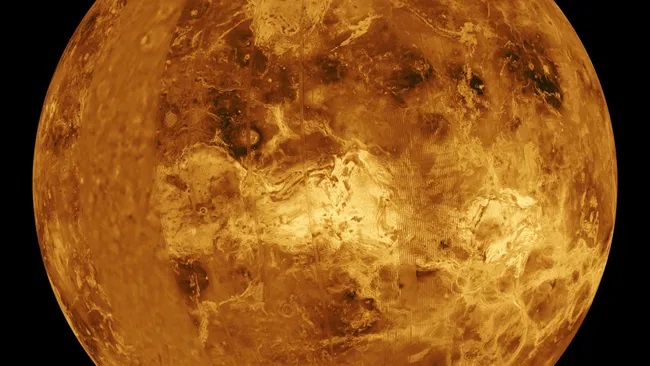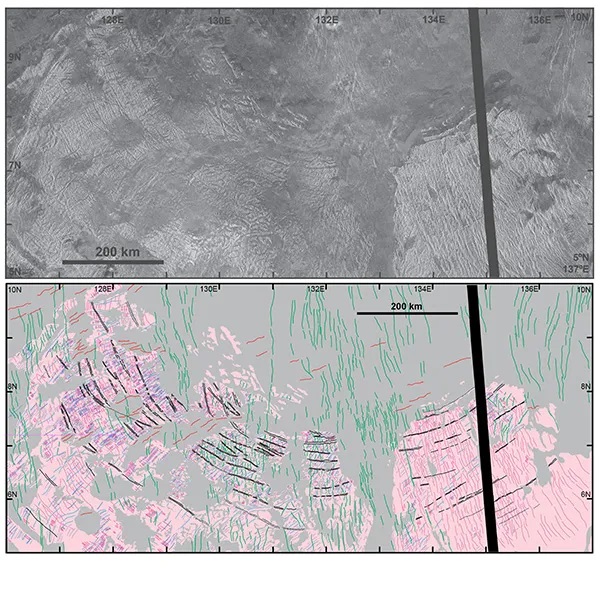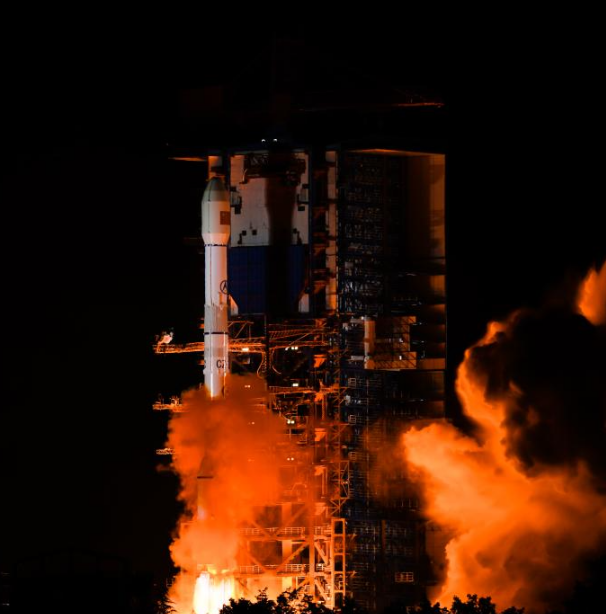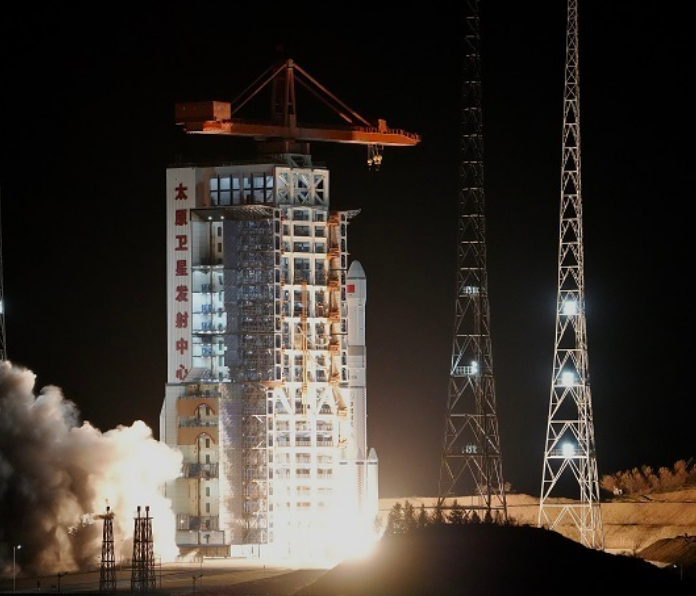08
2024-11
Venus' 'missing' giant impact craters may be hiding in plain sight
Impact features on Venus may have been staring us in the face all along
 (Image credit: NASA/JPL)
(Image credit: NASA/JPL)
That's the message from a team of planetary scientists, who have explained Venus' apparent dearth of large craters by discovering that impacts could have produced the mysterious "tesserae" formations on the Venusian surface.
Tesserae are large — sometimes continent-size — expanses of terrain that have been deformed and covered with wrinkle ridges, which make the landforms look like sheets of corrugated iron. They are formed by lava welling up to the surface, where it cools and hardens, while denser material left in the mantle below a tessera forms a plateau made from a substance called residuum. Sometimes that residuum can be swept away by the flowing mantle around it, allowing the tessera to sink back down to surface level. Now, a team of planetary scientists consisting of Ivan López at the Universidad Rey Juan Carlos in Madrid, Evan Bjonnes of the Lawrence Livermore National Laboratory in California and Vicki Hansen of Arizona's Planetary Science Institute, has connected these tesserae regions with impacts.
In searching for craters on Venus, "We had been looking for big holes in the ground," Hansen said in a statement. And indeed, about 1,000 craters on Venus are already known. However, compared to the huge volumes of craters, particularly large craters, on Mercury, the moon and Mars, craters on Venus appear to be scarce, with none over 300 kilometers (186 miles) wide. This could be just because we haven't recognized them, according to Hansen. "Who would have thought flat, low-lying terrain or a big plateau is what an impact crater would look like on Venus?"
Venus has experienced a very different history compared to the other planets. Episodes of global volcanism have eradicated large swathes of the surface as recently as half a billion years ago, removing evidence of many impact sites. Or so we had thought.
The team focused on a 1,500-km-wide (900 miles) Venusian tessera called Haastte-baad, and applied modeling to radar maps of the tessera (we can't see Venus' surface features directly because of the planet's thick, obscuring atmosphere) to try and better understand how it formed, factoring in how conditions on Venus were different in the distant past. In particular, Venus' crust, called the lithosphere, was much thinner then than it is today. On modern Venus, the lithosphere is a chunky 112 km (70 miles) thick, but billions of years ago, when the interior of Venus was hotter, the solid lithosphere was only about 10 km (6 miles) thick.
he modeling shows that, because of the thin lithosphere, a large asteroid impact could relatively easily punch through the crust and into the mantle below, allowing lava to flood upward and pool in the resulting crater, forming, in this case, the Haastte-baad tessera. The residuum plateau has since been washed away by the convective flow of the mantle below Haastte-baad, causing the tessera's elevation to drop back down. Hansen likens the tessera-forming process to "pea soup with a scum forming on top."
However, that's not the end of the story. Haastte-baad also features distinctive concentric rings that are somewhat reminiscent of some of the craters on the surfaces of the icy moons of Jupiter. These rings form when an object impacts a surface with a harder crust and a softer layer below. On the Galilean moons of Jupiter, the hard crust is the thick ice, and the softer layer is an ocean below, and the rings are ripples frozen in place.
Here's where things become really interesting, because the Haastte-baad rings imply a second impact, not onto ice and water, but onto a harder crust and a pool of lava that still filled the impact basin below. Modeling by the team suggests that this second asteroid had a diameter of about 70 km (45 miles). Two impacts in the same spot is perhaps not so unusual — there are many examples of other double impacts in the solar system, including on Earth — and Haastte-baad's size makes for a good target.
 (Image credit: Lopez et al (2024))
(Image credit: Lopez et al (2024))
The modeling suggests that this all happened sometime between 1.5 and 4 billion years ago; we're fortunate that Haastte-baad is in one of the rare regions of Venus that hasn't since been covered in lava during a global eruption. Whether all tesserae on Venus are impact features remains to be seen, but planetary scientists will be paying more attention to them now to be sure, because of how they can be windows into Venus' distant past.
"If this is really an impact structure, it would be Venus' oldest and largest, giving us a rare glimpse into Venus' past and informing early planet processes," concluded Hansen.
The new findings were published on Oct. 28 in the Journal of Geophysical Research: Planets.
-
29
2025-05

Tianwen-2 Mission Launched Successfully
At 1:31 AM today, China successfully launched the Tianwen-2 planetary exploration probe from the Xichang Satellite Launch Center using the Long March-3B Y110 carrier rocket.
-
13
2025-05

Communication Technology Experiment Satellite No. 19 Successfully Launched
At 2:09 on May 13, China successfully launched the Communication Technology Experiment Satellite No. 19 from the Xichang Satellite Launch Center using a Long March 3B carrier rocket. The satellite smoothly entered its predetermined orbit, and the launch mission was a complete success.
-
12
2025-05

Remote Sensing Satellite No. 40, Group 02, Successfully Launched
On May 11 at 21:27, China successfully launched the Remote Sensing Satellite No. 40, Group 02, from the Taiyuan Satellite Launch Center using a Long March 6A carrier rocket. The satellite entered its predetermined orbit smoothly, and the launch mission was a complete success.









